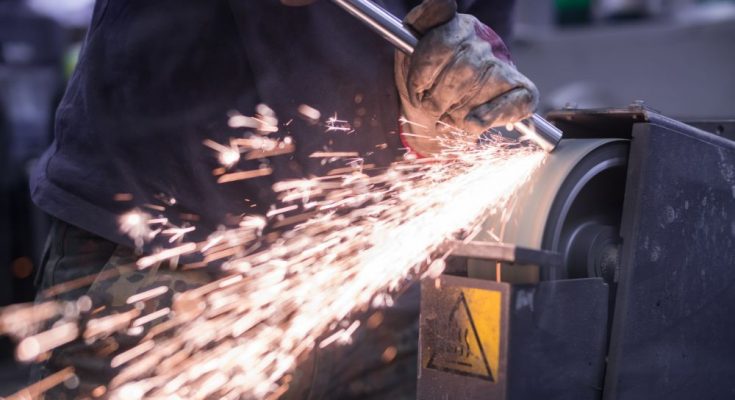One of the most versatile tools in metal fabrication has to be the belt grinder. Not only can it do many different tasks—shaping, sharpening, polishing, and buffing—but it can do them on many kinds of fabrication projects. Follow these top belt grinder techniques for metal fabrication to get the most out of your tools.
Grit Makes the Difference
“Grit” is the term we use to describe the grinding power of a particular belt. Using the wrong belt can mean putting a sharp edge on something that’s not supposed to cut or grinding too much material away on a project. Here’s a rough guide to belt grit and when to use each kind:
- 36 Grit—sharpening a shovel or gardening tools
- 60 Grit—sharpening knives or chisels
- 100 Grit—exceptionally delicate or fine work
Stay in Motion
Another top belt grinder technique for metal fabrication is to avoid too much friction. Friction generates heat, and too much heat can make your machine overheat. To avoid this cycle, make sure to keep moving the blade or whatever you’re grinding so friction stays at a minimum.
In addition to your machine overheating, your project can also get overheated, which can weaken the metal. If you suspect that your metal is too hot, let it cool down in a vat of quenching oil.
Be Mindful of Angle and Pressure
The way you grind metal on a belt grinder can make your life more or less difficult. If you find that the belt grinder isn’t doing what you want to your metal, try switching to a less aggressive (wider) angle.
It also helps to avoid putting too much pressure on your belt grinder. Doing so with a sharp piece of metal can even make the belt snap.
Always Use Safety Gear
It should go without saying that you always need to wear safety gear when using a belt grinder. Goggles protect your eyes from sparks and tiny pieces of metal projectiles, while good shoes and clothing protect your skin and feet from sparks and dropped metal.
There are many advantages to using a belt grinder in your shop, and we hope these tips help you get the most out of yours. Whether you’re bladesmithing or working on custom metal fabrication projects, proper techniques will save you lots of time and energy.



